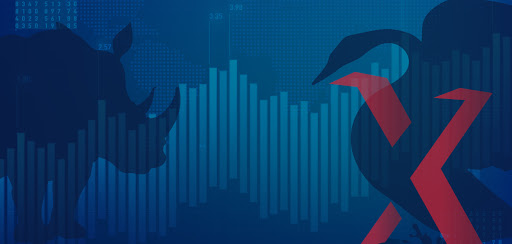We do not expect any hikes from the Fed/ECB through 2021 and 2022, but the market could increase its pricing of an eventual normalization, given the consistent projected growth rebound. The Fed’s average inflation targeting suggests low short-end rates for longer.
While the near-term growth path may prove bumpy, low macro volatility following recent positive vaccine developments, the accommodative stance of monetary policy, direct central bank interventions, and a remarkably supportive supply/demand technical backdrop should support credit risk appetite, in our view. Valuations limit long-term upside relative to the stellar performance since late March. But credit will likely deliver decent excess returns and solid Sharpe ratios in 2021.
Expect corporate credit fundamentals to recoup a considerable portion of the damage inflicted by the sudden stop in the economy, which should translate into a generous backdrop for rating and outlook upgrades. The biggest risk to this view is a more severe deterioration in the virus situation than we expect and/or long delay in the vaccine timeline. A premature return of active re-leveraging is also a risk. We expect cyclicals and COVID-19 disrupted sectors to retrace underperformance from earlier in the year but acknowledge the importance of issuer selection within disrupted groups.
Across the rating spectrum, we expect the ‘down in quality’ rotation of the past few weeks to extend for the next few quarters. While stronger growth next year will likely drive nominal yields higher and curves steeper, the magnitude of the move is unlikely to deter search-for-yield motives given current ultra-low levels and anchored policy rates.
The need for income will likely remain strong even if yields modestly start to move back up from current levels. Coupled with subsiding default risk, we think this will continue to incentivize investors to move down in the quality spectrum. We therefore continue to tilt overweight high yield spreads vs. investment grade in the US market.
We hold a similar view in the Euro zone market even though we are cognizant that the lack of yield support is hardly a new challenge for investors. The more severe restrictions that have been imposed following the recent surge in new infections will likely weigh on growth momentum more in Europe than in the US and could therefore constrain the “down in quality” theme. But additional support from the ECB, will likely provide a decent offset to these headwinds.
Stronger growth will likely push nominal rates higher, especially in the US where we expect 10-year Treasury yields will back up to 1.3% by year end. Under the surface, we also expect this back-up in nominal yields will be driven by upward moves in both real yields and breakeven inflation.

Asia Fixed Income Outlook
The recovery in the economic cycles, still-elevated supply, diminishing space for unconventional easing, and stable front-end rates, should lead to steeper curves in several Asia rates markets into Q1. In China, a further steepening is likely given a more favorable macro-outlook amid high bond supply, while we believe the PBoC will keep policy rates stable, anchoring the front end.
In high-yield markets, we are more positive on India bonds into Q1 2021 (long 5y bond), as we believe the RBI will likely continue to support the bond market through OMOs and twist operations, keeping liquidity flush into Q1 before it starts to tighten in the new fiscal year (after April 2021).





